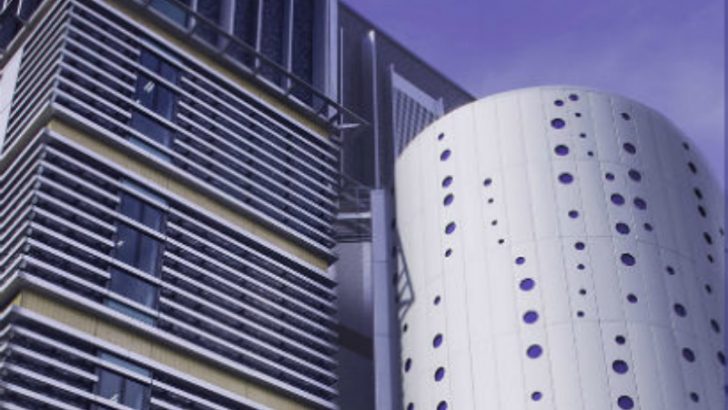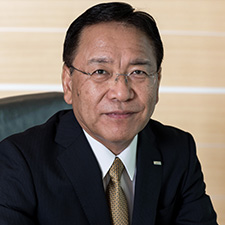
NTT has announced the opening of Financial Data Centre Tower 2 (FDC2) in Hong Kong. With a capacity of more than 7,000 racks it is now the largest data centre in Hong Kong (as of December 2015).
While NTT claim that FDC2 is Tier IV ready they have not completed the certification with the Uptime Institute to validate this claim. As the FDC data centre is already certified as Tier IV this seems only a matter of time though. It is refreshing that NTT actually accredit their data centres rather than just claim the tier IV status.

Mr. Tetsuya Shoji, President & CEO, NTT Communications Corporation commenting on the reasons behind why FDC2 has been built said: “Hong Kong is at the crossroads of China’s ‘One Belt, One Road’ development initiative where the city’s trade with Asian and European countries along the trade corridor has reached USD 670 billion in 2014, accounting for 66 per cent of the city’s total trade.
“However many local, Mainland China and global enterprises have yet to truly transform to a digital enterprise with a future-poof data centre strategy to cope with the rampant growth of mobility, IoT, cloud and big data. The establishment of FDC2 is set to address the acute demand of enterprises’ digital transformation as they capitalize global business opportunities.”
Customers looking for data centre services will find that the new NTT data centre provides a lower total cost of ownership compared to many of the other, older data centres in Hong Kong. With FDC2 built over multiple floors it also ensures that the land used is minimised, and with high rents in Hong Kong it was only logical that NTT has built up rather than out in order to reduce costs to its customers.
In the future data centres may no longer be just above ground as the Hong Kong Government are not just looking to go up but also down Mr. Nicholas Yang, the Secretary for Innovation and Technology, HKSAR Government commented: “Data centres are part of the key infrastructure for a knowledge-based economy, playing a pivotal role in the development of our information and communications technology sector.
“Although land is a scarce resource in Hong Kong, we have made every effort in the past few years to make available suitable land for data centre development, from greenfield sites to conversion of existing industrial buildings. The Government will continue to explore different means to make available more suitable land for data centre use in Hong Kong such as through development of caverns.”
It will be interesting to see whether NTT look to develop one of the first underground data centres. These already exist elsewhere in the world, there are several in the US including Kansas and Pennsylvania, the Green Mountain data centre in Norway and one is being built in Finland currently. In Europe and the US old nuclear bunkers have become popular as data centre sites as they have access to plenty of power and can be readily converted.
NTT FDC2 is state of the art
With the additional volume NTT has maximised the efficiency of its new data centre by installing a cooling wall, which delivers front flow cooling with hot aisle containment. Aiding this is 3,600,000 litre battery of chilled water which provides 42 min of chilled water backup helping to maintain stable environmental condition in a cost effective manner.
The racks within the data centre reach heights of 2.6 metres allowing for 54U of capacity. This makes these some of the tallest racks in use anywhere in the world and will require careful management to ensure health and safety rules are met. Energy efficiency is always considered with LED lights being used throughout the site combined with heat and movement sensors to help ensure that they are only on when required. In summary FDC2 can achieve a market-leading annualized PUE of below 1.5 at full load condition.
NTT has already introduced an 8 layer physical security model, which starts at the perimeter of the campus and includes man traps and introduces security between floors and segregation points all the way down to cage level. While this is undoubtedly robust it will be interesting to see how practical it is in reality and how quickly staff can move around the location. Though with remote access most tasks no longer need physical presence in the data centre compared to a few years ago.
In order to meet the Tier IV requirements the new data centre is impressively fault tolerant. N+1 cooling, 2N power supplies and with 15 minutes of battery back-up to provide cover for the diesel generators to provide full power coverage. There is fuel on site for 24 hours and the water storage tanks supply 24 hours of coolant.
It would be interesting to see how easy it is to source sufficient water after the 24 hour period as the logistics for that could be complex while diesel should be more easily supplied. NTT do not make the water requirements known though. With these concerns it raises the question as to whether NTT have done a full failure test in order to establish what challenge replacing the water brings.
Conclusion
Hong Kong is hungry for data centre space and as the economic environment improves companies are looking for more compute power from their providers at lower costs. It will be interesting to see whether the older data centres are being decommissioned at some point and replaced with new possibly underground data centres. For now though NTT has provided a data centre fit for the financial hub that Hong Kong is with security, efficiency and reliability that others will find difficult to match.
Mrs Fanny Law, Chairperson of Hong Kong Science and Technology Parks Corporation (HKSTP) commenting on the announcement said: “In this digital age when everything goes online, the role of data centres has never been more important. Not only are they the essential infrastructure supporting our pillar industries such as trading and finance, but also the catalyst for the development of new industries and applications that add impetus to our economy.
“We at HKSTP are devoted to staying connected with the industry to foster collaboration and catalyse growth. I congratulate NTT Communications for its foresight in launching this new data centre which will benefit both the industry and the society in this era of digital transformation.”
This is the second announcement that NTT has made around the opening of a data centre. They have also announced the opening of a second data centre in Thailand. The Thailand Bangkok 2 Data Centre has a capacity of 1,400 racks is built over four floors and is one of the largest data centres in Bangkok.
With 54U racks, NTT may just be looking to offer a technology career to retired basketball players or circus stilt walkers.


























